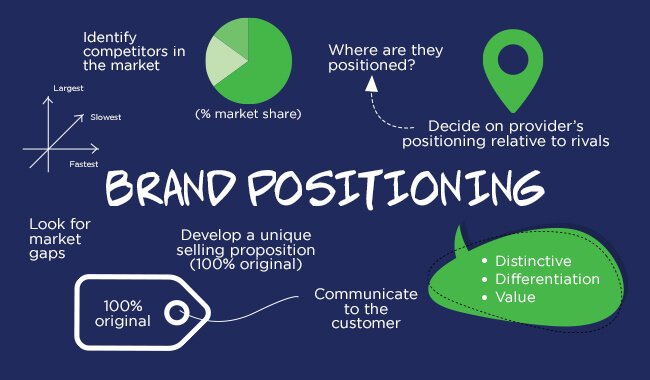Daniel Davidson, MD, MBA, DBA, PHD
Introduction:
An important turning point in a business’s development is going public, which provides access to capital markets, more liquidity, and growth prospects. The procedure for going public, however, might differ based on the industry, size, and strategic goals of the business. In this article, we will examine the numerous methods for listing a business on the stock exchange and the kinds of public businesses that result from them.
Different Methods of Taking a Company Public:
A company’s growth trajectory and access to finance can be greatly impacted by the crucial decision of going public. A corporation can choose from a number of different public offering strategies, each with unique benefits, factors, and ramifications. The many approaches to bringing a business public are examined here:
Initial Public Offering (IPO):
Taking a company public through an IPO is probably the most conventional approach.
In an initial public offering (IPO), the business teams up with investment banks to underwrite and offer freshly issued stock to both institutional and individual buyers.
In-depth regulatory filings, investor interest-generating roadshows, and price negotiations are usually part of the IPO process.
Through IPOs, a firm can access public markets for future fundraising, gain more liquidity for current shareholders, and receive an infusion of capital.
Direct Listing:
Avoiding the customary IPO process, a direct listing is a less common way to go public.
A direct listing occurs when a business lists its current shares on a stock market without raising money or issuing new shares.
It is possible for current shareholders, such as staff members and original investors, to sell their shares to the general public.
In comparison to typical IPOs, direct listings provide companies with more control over time and pricing, as well as the possibility of cost savings.
Merger of a Special Purpose Acquisition Company (SPAC):
An SPAC is a publicly traded shell company established with the intention of purchasing or merging with another business in order to bring it public.
SPACs use initial public offerings (IPOs) to collect money in order to find and acquire a target company in a predetermined amount of time.
Once a target company has been selected, it can go public without going through the conventional IPO procedure by merging with the target through the SPAC.
Comparing SPAC mergers to typical IPOs, private companies can achieve greater certainty in deal terms and valuation, as well as a quicker route to coming public.
Reverse Merger:
A private corporation buys a publicly traded shell company in a reverse merger, which is often referred to as a reverse takeover (RTO) or reverse initial public offering (IPO).
Reverse mergers occur when a privately held corporation joins forces with a publicly traded shell company to essentially replace the former on the stock exchange.
Because they include less legal requirements and less thorough due diligence, reverse mergers can be a quicker and less expensive alternative to typical initial public offerings (IPOs).
Reverse mergers could, however, potentially be more risky and unknown, with possible ownership dilution and regulatory scrutiny among them.
Direct Public Offering (DPO):
A Direct Public Offering (DPO) is a different way for a business to go public, comparable to a direct listing but with some differences.
Under a DPO, the company sells its stock to investors directly; investment banks and underwriters are not involved.
DPOs allow a firm to raise funds from investors without going through the usual IPO process. Typically, this is done through a registered offering with the Securities and Exchange Commission (SEC).
In comparison to typical IPOs, DPOs may save companies money and provide them more flexibility over the terms, timing, and price of their offerings.
Regulation A+ Offering:
A mini-IPO, sometimes referred to as a Regulation A+ offering, is a kind of public offering that enables businesses to raise money from accredited and non-accredited investors.
Regulation A+ offerings are more affordable and accessible for smaller businesses since they are carried out in accordance with SEC regulations that exempt them from some registration obligations.
With less disclosure requirements than with standard initial public offerings (IPOs), companies can raise up to $50 million through a Tier 2 Regulation A+ deal.
Offerings categorized as Regulation A+ give businesses a way to access public capital markets and grow their investor base without having to go public.
Dual-Class Share Structure:
This type of corporate governance structure enables businesses to issue various classes of shares with separate voting rights.
Founders, executives, or early investors may own shares with more voting power in a dual-class share structure, which gives them authority over management and business decisions.
Technology companies and other high-growth businesses frequently adopt dual-class share structures as a means of maintaining autonomy and control after going public.
Dual-class share structures may limit shareholder rights and create governance issues, even if they might give the business stability and a long-term vision.
Dual-Class Share Structure: This type of corporate governance structure enables businesses to issue various classes of shares with separate voting rights.
Founders, executives, or early investors may own shares with more voting power in a dual-class share structure, which gives them authority over management and business decisions.
Technology companies and other high-growth businesses frequently adopt dual-class share structures as a means of maintaining autonomy and control after going public.
Dual-class share structures may limit shareholder rights and create governance issues, even if they might give the business stability and a long-term vision.
Different Types of Public Companies:
Big-Cap Businesses:
Big-cap businesses are well-established, seasoned enterprises with a substantial market capitalization, usually more than $10 billion. These businesses frequently have broad operations, a variety of revenue sources, and a global presence. Large-cap firms are frequently well-known household brands and leaders in their industries, with a solid track record of reliability, dependability, and great brand awareness. Apple Inc., Microsoft Corporation, and Amazon.com Inc. are a few examples.
Mid-Cap Companies:
With an average market value of $2 billion to $10 billion, mid-cap firms are positioned between large-cap and small-cap firms. Even though these businesses are frequently well-established, they still have potential for development. Mid-cap businesses can be found in a number of sectors, including as consumer products, healthcare, technology, and industrials. They provide investors with chances for financial appreciation while striking a balance between risk and growth potential. DocuSign Inc., Chipotle Mexican Grill Inc., and Twitter Inc. are a few examples.
Small-Cap Businesses:
Businesses classified as small-caps have market capitalizations between $300 million and $2 billion. With an emphasis on growth and innovation, these businesses are usually younger and less established than large-cap and mid-cap firms. Small-cap businesses can be found in developing sectors of the market or in niche markets, providing investors with more risk and volatility along with the possibility of substantial rewards. Etsy Inc., Beyond Meat Inc., and Zoom Video Communications Inc. are a few examples.
Micro-Cap Companies:
Typically having a market capitalization of less than $300 million, micro-cap companies are the smallest of all publicly traded corporations. These enterprises are frequently in their early stages of development, having little funding and a greater risk profile. Micro-cap businesses have the potential for quick expansion but are also more vulnerable to changes in the market because they typically operate in specialized or niche markets. Regional banks, biotechnology ventures, and green energy firms are a few examples.
Dividend-Giving Businesses:
Publicly traded businesses that pay dividends to their shareholders are those that allocate a percentage of their earnings to them. These businesses frequently exhibit consistent cash flows, sound financial standing, and a history of prosperity. Companies in a variety of industries, whether large-cap, mid-cap, or small-cap, may pay dividends. These firms’ consistent dividend payments and potential for capital growth may draw in income and dividend growth investors.
Growth Companies:
In their early stages of development, publicly traded companies that place a higher priority on expansion and revenue growth than profitability are known as growth companies. To support their continued growth, these businesses reinvest their profits in R&D, market expansion, and acquisitions. High-growth industries including technology, biotechnology, and e-commerce are potential locations for growth enterprises to operate. Shopify Inc., Netflix Inc., and Tesla Inc. are a few examples.
Conclusion:
A company’s objectives, financial situation, and market conditions are all carefully considered before deciding to go public. Companies can acquire cash and liquidity through the process of going public, which exposes them to a wider range of investors. This can happen through an IPO, direct listing, or SPAC merger. In order to navigate the ever-changing public markets and find investment opportunities that align with their goals and risk tolerance, investors must have a thorough understanding of the many categories of public firms, ranging from small-cap startups to large-cap industry leaders.







